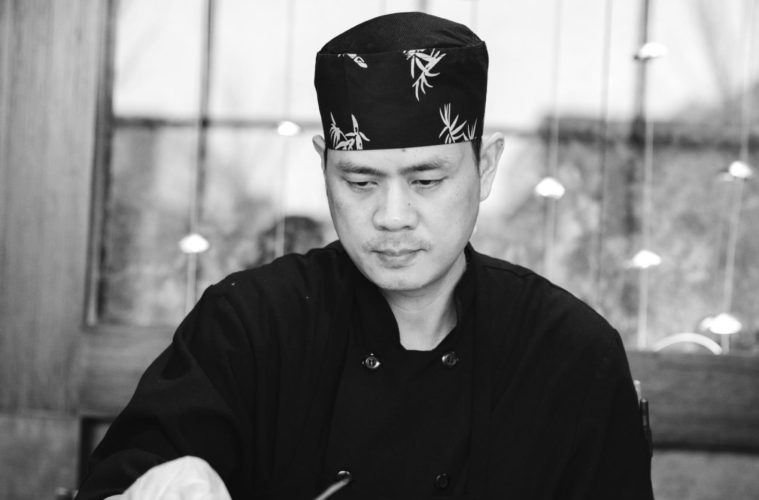Sushi master Steve Weng’s hand whips around inside a steaming vat of sushi rice, and in a second or two, he is holding a compact ball. It looks airy and light—not at all densely packed—yet the individual grains cling together in a perfect shape, awaiting a sliver of raw fish.
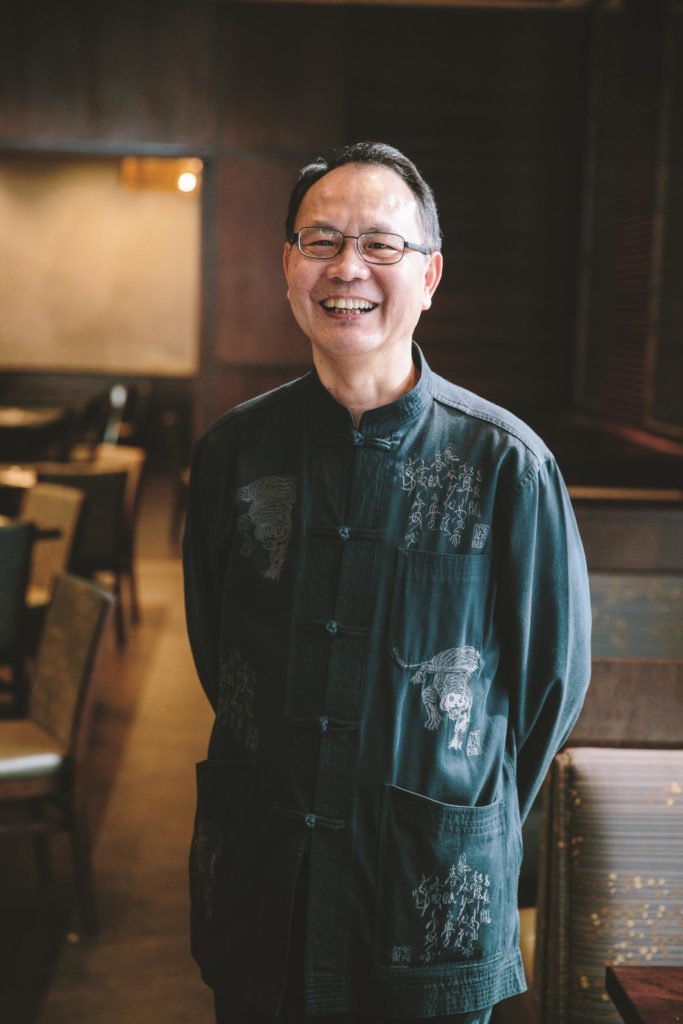
As the base for many sushi dishes, the rice requires an artful touch, explains Weng, who can be found behind the sushi bar at Feng Shui Restaurant in Burlington. If the rice is packed too tightly, it throws off the balance of the dish. And sushi is all about balance; from the delicate slices of fish to the heat from the wasabi, the right touch means the difference between delight and disappointment.
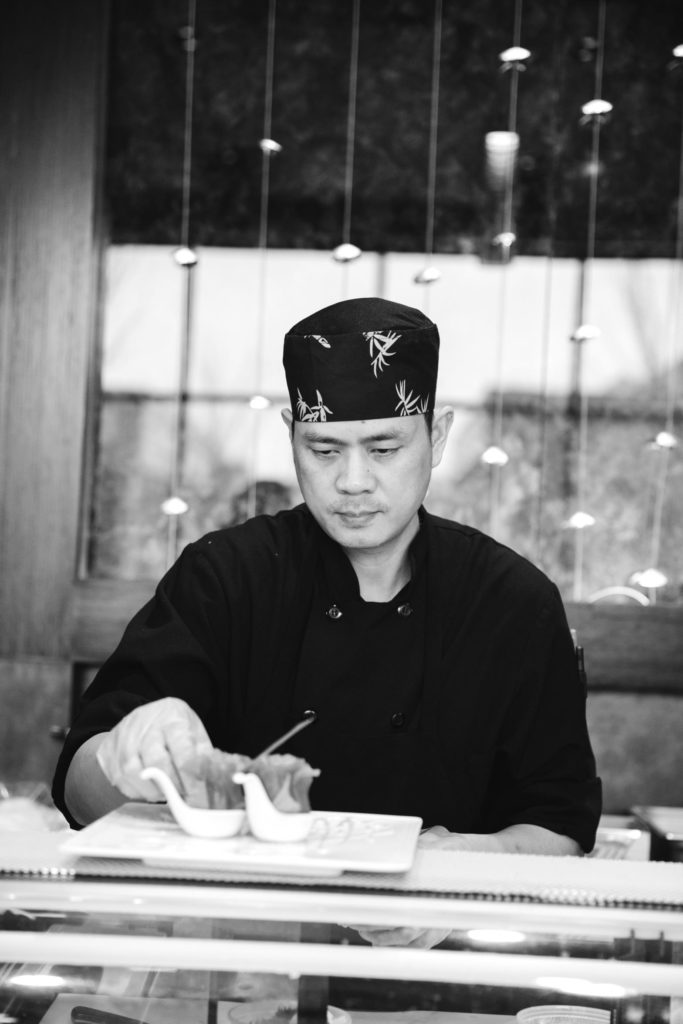
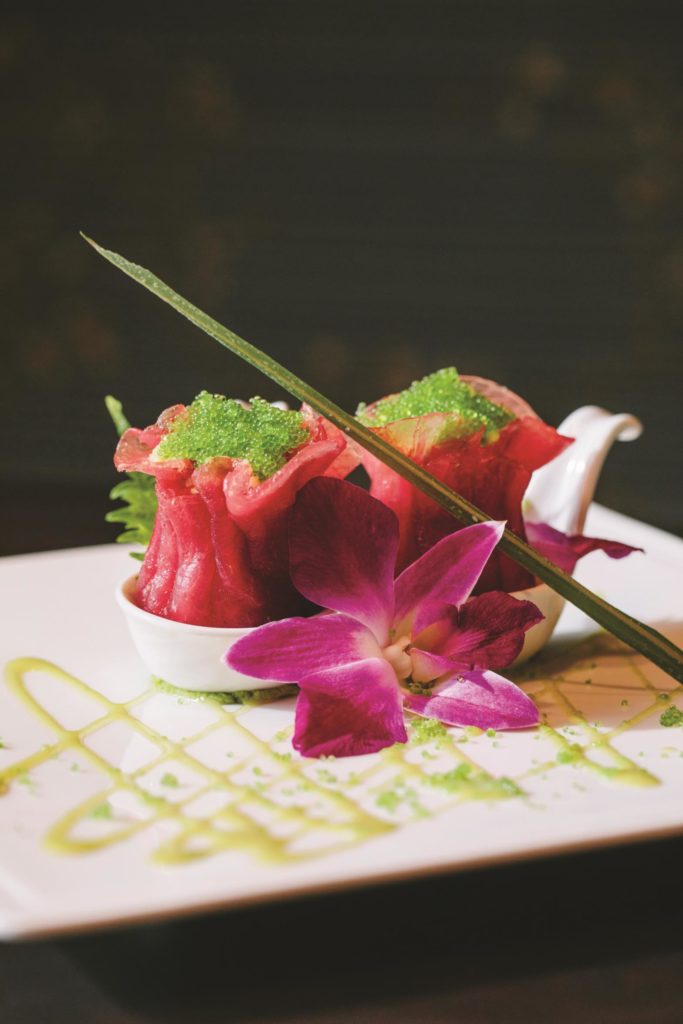
It always starts with the rice. In fact, the word sushi actually refers to rice seasoned with vinegar—it doesn’t need to include fish at all to be sushi. If the dish includes raw fish but no rice, it technically isn’t sushi, but rather sashimi. Raw fish was first combined with vinegared rice in China more than a thousand years ago, as a way to preserve the fish, but it was adopted by Japan soon after, where it was elevated to an art form
At its core, sushi seems simple. There’s very little cooking, if any, and precious few ingredients. But anyone who eats sushi, or has seen the movie Jiro Dreams of Sushi, knows that a piece of raw tuna from one place could be a completely different experience from a piece of raw tuna someplace else. While the freshness and quality of the fish have an impact, of course, the bright colors of the filets and garnishes, carefully arranged, are an important part of the dish. Even the way the fish is cut, with the grain or against, thin or thick, can affect the way it looks and tastes—and the diner’s overall experience. “People think sushi is simple, but it’s not,” says Frank Zheng, CFO at Feng Shui. “Sushi masters are like magicians. You know there is a trick, but you can’t figure it out.”
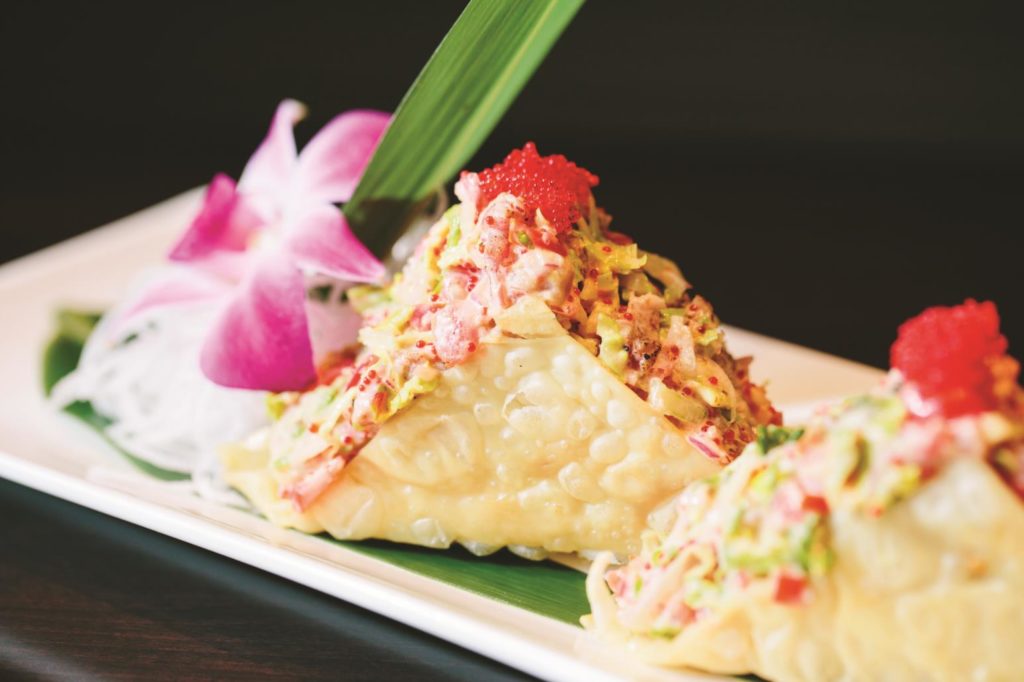
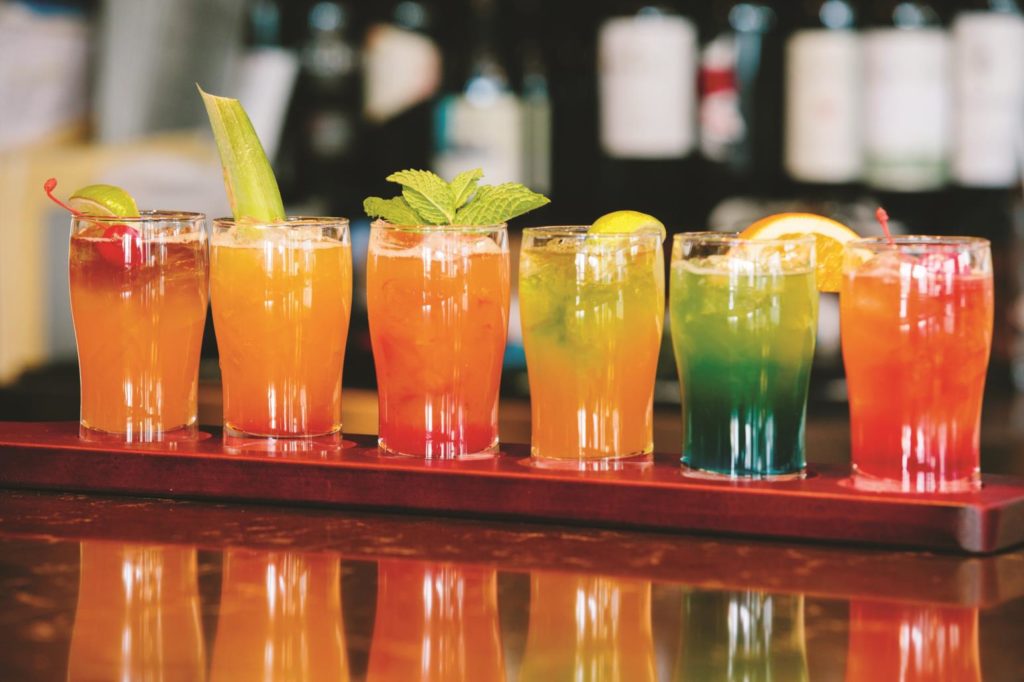
At Feng Shui, chef Weng draws inspiration globally for his creations. His menu includes a tuna “taco”—a crispy wonton formed into a shell, holding a mixture of Cajun-spiced tuna, avocado, and impossibly small squares of diced tomatoes—and a wasabi tuna dumpling, which takes its shape from a steamed pork bun. The similarities to an actual dumpling end there, however. Weng pounds a piece of tuna paper-thin, folding it on itself like puff pastry and flattening it out several more times to create a delicate wrapper, which is stuffed with a mix of fresh crab, wasabi, and flying fish roe known as tobiko.
Tobiko is among the many attractive flourishes at Weng’s fingertips; the fish eggs can be infused to yield different flavors and colors, from a yellow tobiko laced with yuzu (a Japanese citrus fruit) to a green one seasoned with wasabi.
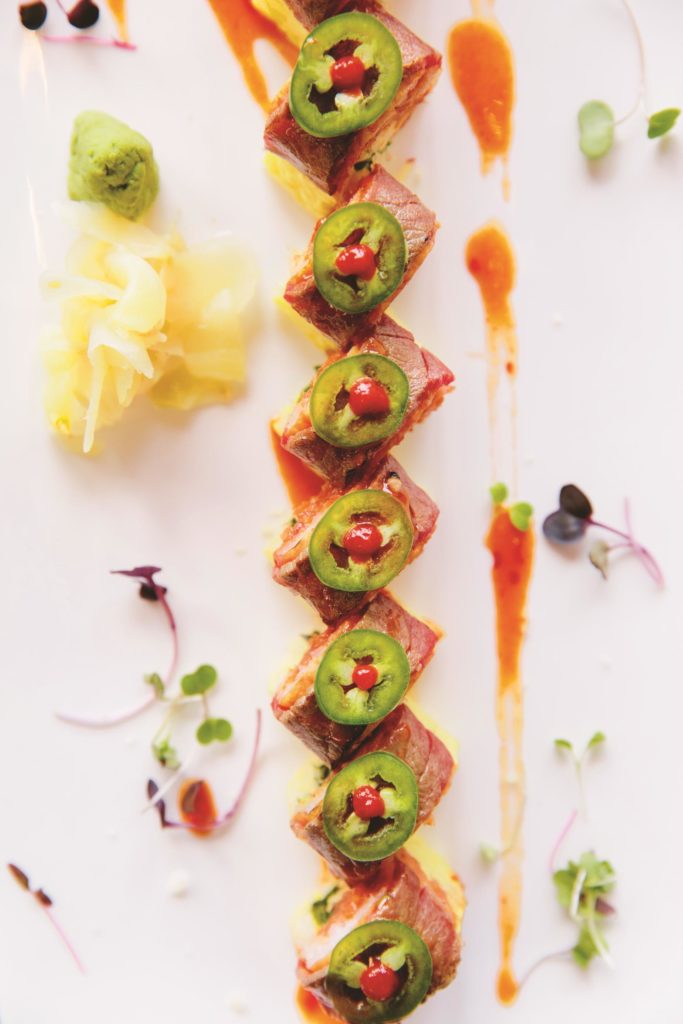
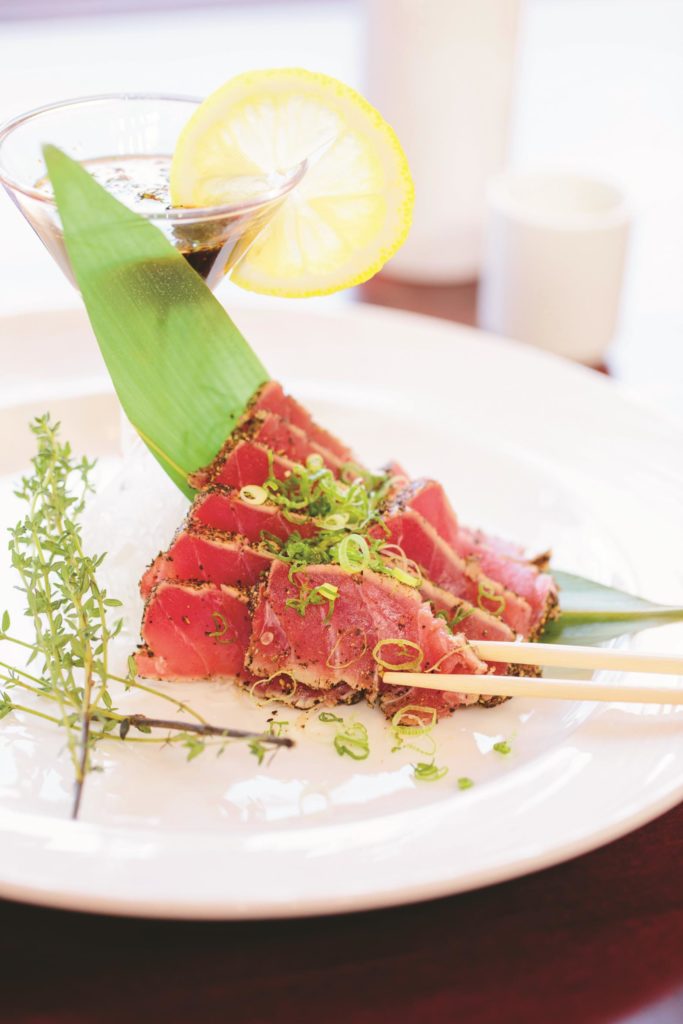
Because people eat with their eyes first, careful thought is also given to plating. Chef Weng heads to New York to shop for his dishware. And at Jade Restaurant in North Andover, crafting the look of a dish is often a team effort, says Kenny Foo, one of the restaurant’s owners. He notes that the right combination can take a dish to a new level—literally. For example, when sushi chef Yongwu You first thought up Pepper Tuna, a tongue-tingling lightly seared pepper-encrusted tuna and spicy sauce, the accompanying chili-spiked ponzu sauce was drizzled on the plate. But head chef Jinchao Li suggested serving the sauce in a martini glass—elevating the dish to a social media darling (pictured above). Foo adds that while building a beautiful plate has always been an important part of the sushi experience, social media has furthered that goal. “We want to present dishes that people want to take pictures of,” he says. “We depend on our customers to get the word out.”
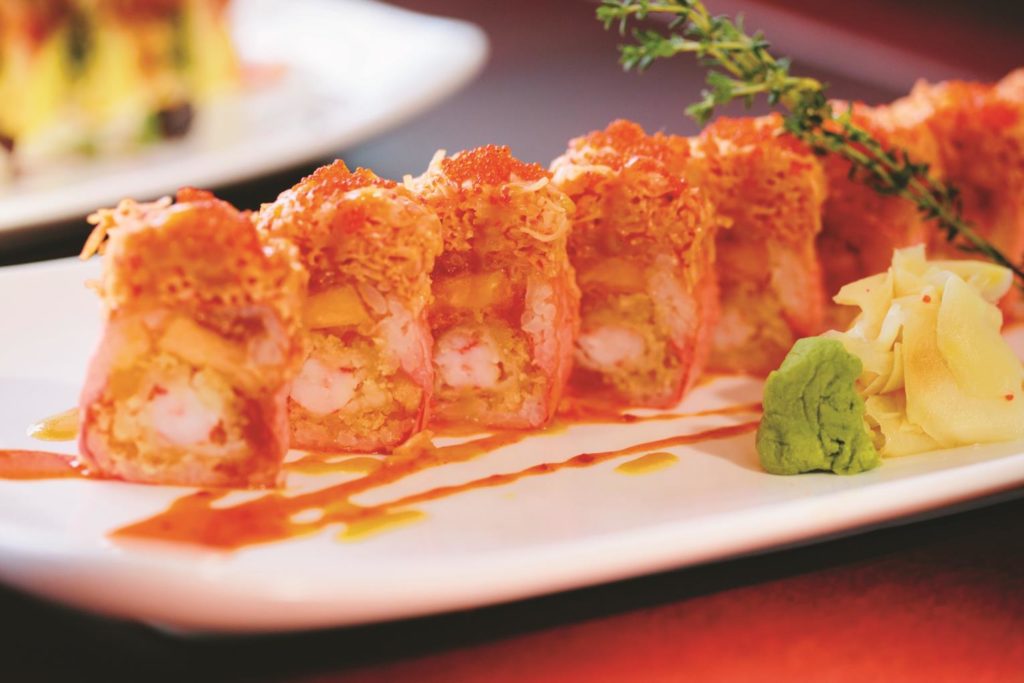
One dish people love to take pictures of is the Angry Dragon Roll, a dramatic creation consisting of shrimp tempura, spicy tuna, and papaya, topped with spicy king crab. Just as pretty, but with more umami, is the Torched Wagyu Beef Maki—layers of tender high-quality beef stuffed with spicy tuna, basil, and apple and topped with slivers of jalapeno, like a dare to spice lovers.
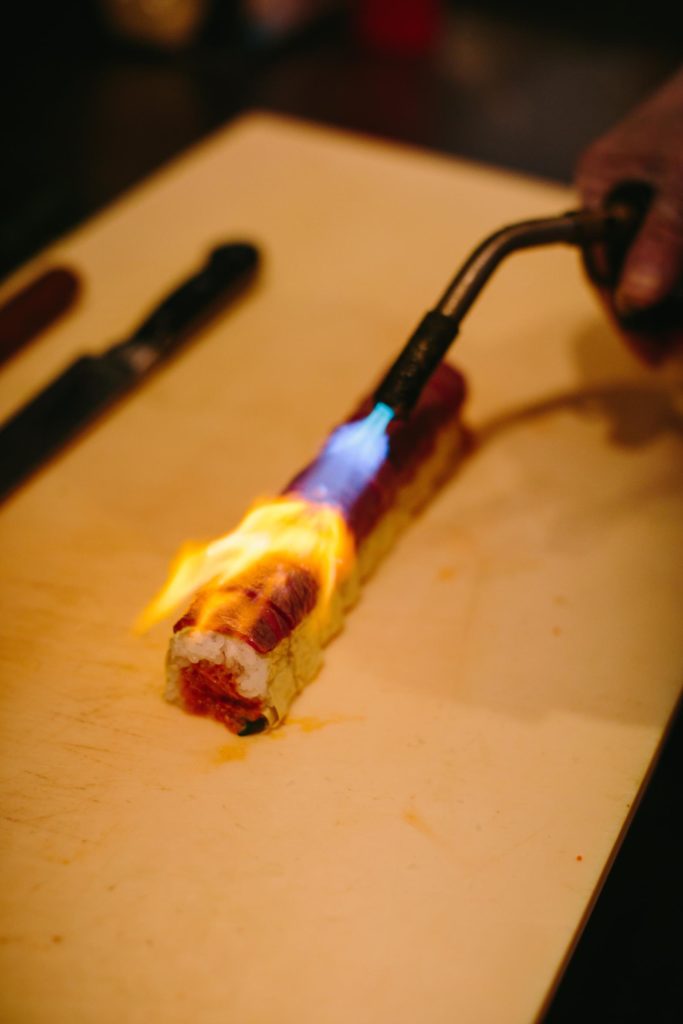

Crafting those tiny slivers of pepper, or perfectly uniform slices of anything from cucumber to mango, requires extraordinary knife skills—and an extraordinarily sharp knife, notes Dongkyu “DK” Jung, sushi chef at TWK [The Waterfield Kitchen] in Winchester, whose beautiful Yanagi knives are stored in an equally attractive case. Jung says his cutting board is like a canvas—an apt metaphor, since he is an artist as well, who paints colorful, joyful works in his spare time.
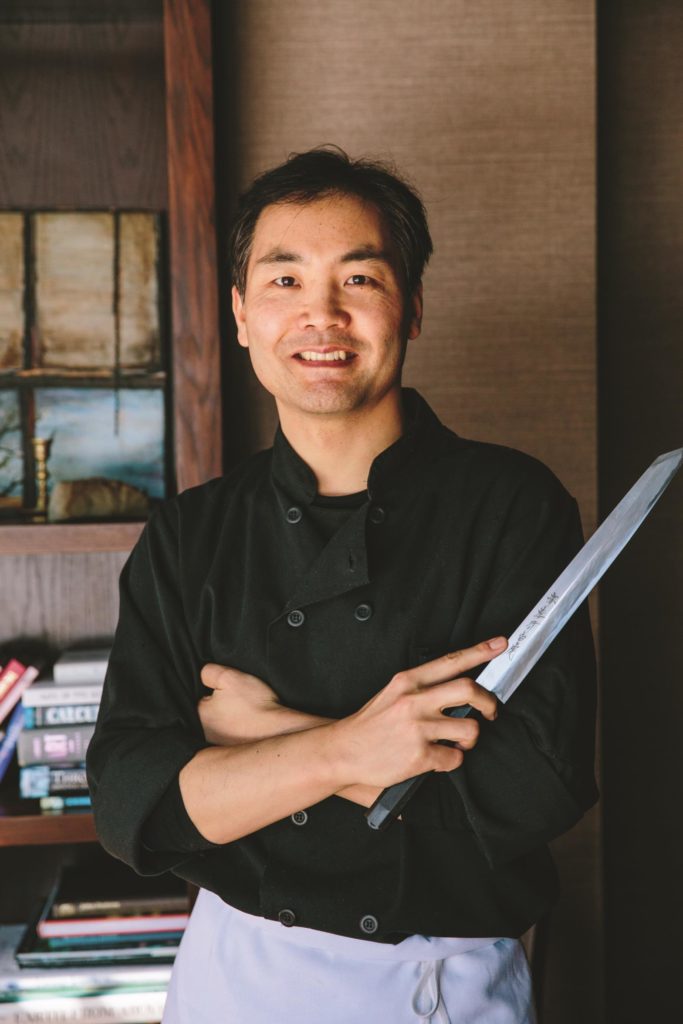
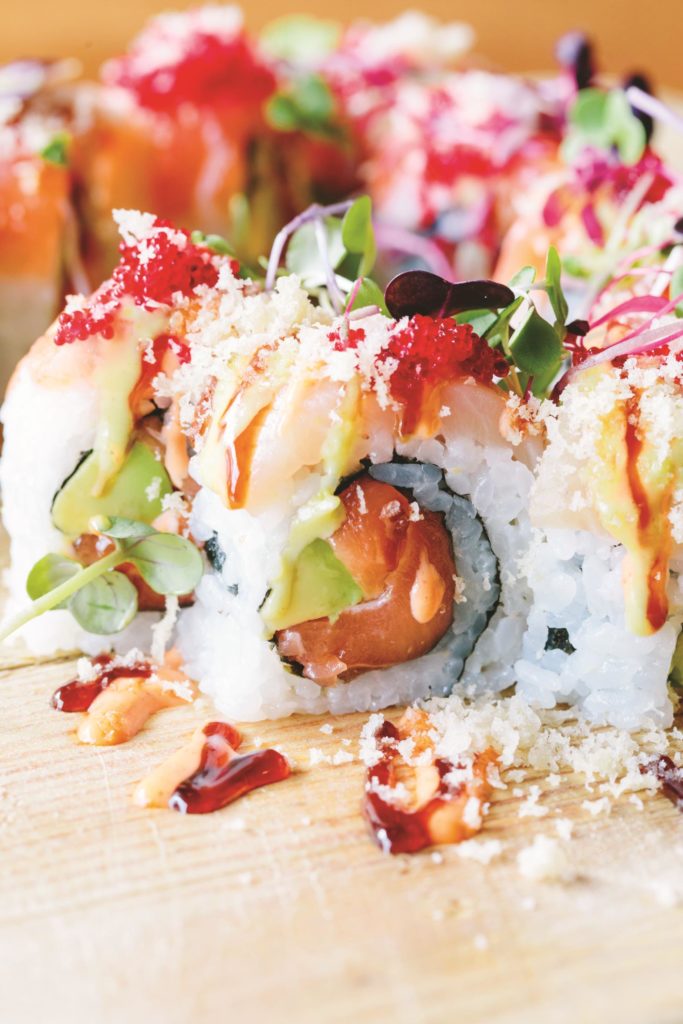
At work, he has an array of seven different sauces to dress his creations, alongside glistening fish and delicate greens. All of those components are on display in the French Cake roll, a riot of color from different kinds of salmon and tobiko, as well as avocado, yellowtail, and three sauces. Shaped like a heart and frilled with microgreens, it’s as pretty as a picture. And it tastes as good as it looks. gofengshui.com, jadenorthandover.com,
twk-winchester.com
Freshness First: Tips for Making Sushi at Home
What to choose?
“I personally love yellowtail, toro (fatty tuna), Scottish salmon, and scallops,” Derr says, noting that most of the time, his scallops are sushi grade, meaning they have been out of the water for less than four days.
Can I use local fish?
Bluefin tuna, scallops, fluke, black seabass, striped bass, bluefish, mackerel, and scup are all local and are great picks, Derr says. “I would steer clear of groundfish like haddock and cod,” he advises. “It also boils down to taste and texture preference.”
How do I find sushi-grade fish?
The nose knows, Derr says. If you walk into a fish store, it should smell clean, like the ocean—not at all fishy. From there, build a relationship with your fishmonger, and ask them what they’d consume raw.
Sushi or sashimi?
Derr says he tends to eat more sashimi (slices of fish without rice) than sushi, as you can taste the fish better on its own. When making sashimi, it is important to cut across the grain for fish like snapper, black sea bass, and striper.
Tips for making sushi at home?
“Great fish, company, wine, and patience,” Derr says, adding that making sushi is a great group event to do with family and friends. “It takes some time to get the ratios and cuts of fish correct when making rolls, but keep at it and it will come.”

